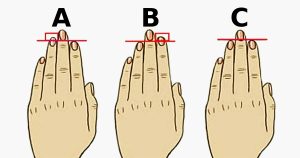Jacob Wolf’s family was large, prosperous, and admired in Turtle Lake, N.D. But on the morning of April 24, 1920, all that was left of them were a wailing infant and eight bloody corpses.
For a couple of days, neighbors had been noticing unsettling signs at the Wolf farm —laundry hanging on the line after it was dry and horses in harness unattended in the yard.
Earlier in the week, Wolf had asked to borrow a tool from John Kraft, a farmer who lived nearby. When Kraft did not hear from him again, he decided to look in on his neighbor.
What he found were murders that the Bismarck (North Dakota) Tribune described as the “most revolting and mysterious that have ever been perpetrated in the northwest.”
Wolf, 41, his wife, Beata, 35, and five of his daughters, ranging in age from 3 to 12, were all dead. An eighth victim, Jake Hofer, 13, was a relative who had been hired to do chores for the family.

Jacob and Beatta Wolf and one of their six daughters.
Only one family member, baby Emma, was spared. Kraft found the 8-month-old in her crib in the bedroom, cold, hungry, and crying. Kraft whisked the baby off to a neighbor’s home for care.
Emma, the Tribune observed, “the only survivor of the crime, is today the owner of a well-equipped farm, free from encumbrances and valued at over $30,000” (about $385,000 today).
Blood trails led from the kitchen to the cellar, where Kraft found a dumping ground for five bodies — Hofer, Beata, and daughters Bertha, 12, Liddia, 5, and Martha, 3. All but one died from shotgun blasts fired at close range. A skull-crushing blow from an ax had ended Martha’s life.
Jacob’s corpse and those of daughters Maria, 9, and Edna, 8, were piled in the barn. Both girls had been shot in the head. Their father had two shotgun wounds, one in the back that was fired from a distance and another so close that it had ripped away much of his right side.
Wolf’s pigs had been nibbling on the remains, further mutilating the bodies.
Investigators proposed a theory that two killers came to the farm on Thursday, just after the midday meal. Mrs. Wolf, Hofer and three daughters were murdered first in the kitchen. Jacob, outside tending livestock, was shot once from a distance and then again at close range by the second gunman. Maria and Edna appeared to have run into the barn to hide but could not escape.
Days later, police found a double-barreled shotgun in a shallow ditch near the farm, but there was not much else in the way of tangible clues.
Nothing, not even a small safe containing hundreds of dollars, had been touched, so theft was ruled out. The Wolfs were popular, as evidenced by the turnout of 2,500 mourners at the funeral.
The victims were buried under a headstone that read “The Murdered Family.” Ninety years later, North Dakota journalist Vernon Keel published a historical novel based on the crime using the epitaph for a title.
Bloodhounds and interrogations of everyone within a 25-mile radius yielded nothing. Police held out little hope. More than 48 hours had passed before the bodies were found, plenty of time for the killers to flee.
Vernon Keel’s “The Murdered Family” was based on the horrific massacre of the Wolf family.
Then they got a break. On a morning soon after the slaughter, another neighbor — Henry Layer, 36 — drove up to the farm. Layer told detectives he had come to care for Wolf’s livestock.
Investigators learned from neighbors that there was bad blood between the men. It was apparently the result of ongoing disputes over their animals — Layer’s cows and Wolf’s highly trained herding dogs. Layer would let his cows graze on his neighbor’s land. Wolf would sic the dogs on them.
A recent encounter left one of Layer’s cows near death.
Layer became the main focus of the investigation. Police arrested him on May 11.
“Farmer Confesses Turtle Lake Murders,” was the headline of the May 13 Bismarck Tribune. Layer told police that he had gone to Wolf’s farm to demand damages for the cow. Wolf told Layer to beat it and then got a shotgun. Layer wrested the gun from Wolf and began shooting.
Funeral service for eight members of the Wolf family.
“I do not remember whom I shot first,” he said. Then he described how he methodically chased and killed his victims and dumped the bodies.
“The reason I did not kill the baby was, I believe, because I did not go into the room in which the baby lay,” he said.
Within two days of his arrest, Layer had confessed, received a life sentence at hard labor, and was packed off to prison.
“This is believed to be the fastest administration of justice on record in any state,” noted the Tribune.
Many believed justice may have been too swift. Layer quickly repudiated his confession, insisting it was forced out of him through a brutal third degree. He maintained his innocence to his death from complications related to appendicitis in 1925. To this day, some believe Layer was railroaded and that the real killers got away.
Over the years, the murders became a local legend. In 2010, Keel, who grew up in the area, brought the sad tale into the modern media era with the book, a website, and a Facebook page with nearly 2,000 followers.
One of the big questions about the case — whatever happened to baby Emma — is answered there. The “lone survivor” grew up, raised a family, and remained in the Turtle Lake area until her death at 84 in 2003.






